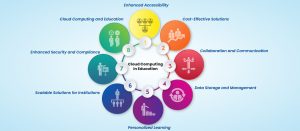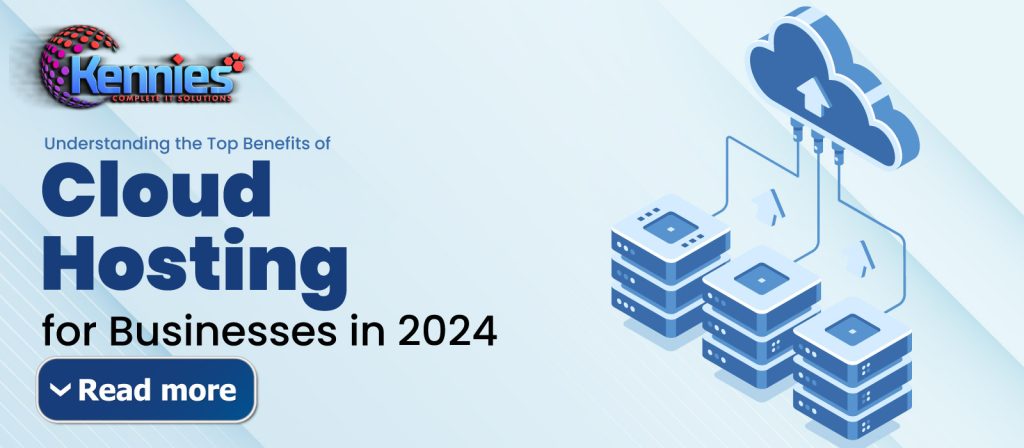
Cloud Computing or Cloud Hosting, one of the newest technological advancements in the contemporary years, has revolutionized almost all industries, and the Ed-tech industry is no exception. Various educational institutions have been able to enhance their capacities comprehensively. These benefits are enhanced learning and teaching experience, improved teaching approaches, efficiency in management, and improved client interaction between students and instructors.
This article focuses on providing a brief introduction to cloud computing in relation to the education sector, the opportunities that it presents, and the various issues that an institution might encounter while migrating to cloud services. So, without any further delay, let’s get started.
Understanding Cloud Computing
63% of educators plan to manage education offerings using curriculum software (The Learning Counsel)
Cloud computing is a type of model under which the computing services and the software are delivered over the web. The computing services include the servers, storage, databases, and networks as well as the computing software it hosts. It is like using a computer on which one can run programs like a PC but the computing infrastructure is hosted by a third party, on which the consumer has no control.
Besides this, it also makes use of these services flexible since the user can access these products on a pay-as-you-go basis. This helps businesses enhance their resource capacities in a way that does not require physical assets to be invested in. It also has some advantages such as it’s inexpensive, easily accessible, scalable, and flexible.
There are three categories of cloud systems: IaaS which is, Infrastructure as a Service, PaaS which is, Platform as a Service & SaaS which is, Software as a Service. These services provide real benefits in that IaaS is connected with virtualized computing resources, PaaS with the development of applications and their administration, and SaaS in delivering packaged applications via the internet.
Therefore, cloud computing is associated with the change in the IT infrastructure and, at the same time, is able to provide improved, agile, and scalable solutions.
Cloud Computing in Education: Key Applications

- Enhanced Accessibility and Flexibility
Some of the benefits of cloud computing include flexibility and increased accessibility. One can enhance the availability of tutors, scholars, and other educational resources through the use of cloud computing. They can now be accessed anytime and from anywhere. Such an approach is suitable for all learning types, including regular, distance, or hybrid models, thus making education more open to remote learners.
For example, Google Classroom and Microsoft Teams are learning management systems that create a classroom environment where the students can access lessons and notes as well as engage in activities with other students. Such is especially helpful for students who are taking online classes or in another model where they are not physically present in the class.
- Cost-Effective Solutions
With cloud services, businesses can avoid the expenses required to own, manage, and update their own IT hardware. Schools and colleges do not have to focus on purchasing expensive physical servers or storage services as cloud service offers resources on demand. This shift enables schools and universities to channel their funds to other priorities, such as improving the curriculum and training faculty.
Furthermore, there are numerous cloud-based educational tools and applications that may be obtained with an annual or monthly subscription fee which is far cheaper than paying for a perpetual license for stand-alone educational hubs.
Let’s have a look at some of the stats and data from Data Bridge:
A school management system helps collect and manage data about students, faculty, and staff. Using a cloud-based system can ease the burden of planning lessons for 74% of teachers who feel overwhelmed, allowing them to create student-centric learning programs with ease.
According to Data Bridge, growth in the global school management system sector will average a CAGR of 17.1% between 2021 and 2028. By 2028, the market will be worth $41.26 billion.
- Collaboration and Communication
Modern technological tools improve social interaction and communication between students and foster among them or between them and their teachings. Software such as Google Drive, Dropbox, etc, can make documents and files shared in real-time and allow group projects or group assignments to be worked on together in real-time. Zoom, Microsoft Teams, Facetime, etc, are useful in that they are capable of providing video conferencing, which further enables virtual meetings, webinars, and online classes.
These tools help remove geographical constraints so that students and teachers from different parts of the world can collaborate with ease. This is especially beneficial to institutions that have several centers or programs all over the world.
- Data Storage and Management
One of the greatest concerns in managing big data is the storage and retrieval of data such as student records, grades, and research data, among others that are compulsory in educational institutions. Cloud computing provides elastic and secure storage, whereby information is stored, retrieved, and has a copy in case of damage. This makes it possible to avoid cases where the data stored in a particular hardware component can be lost due to various reasons.
Moreover, cloud data management systems provide flexibility in storing data in real-time and mirroring it, which is useful and informative to all parties. This can enhance organizational management and may result in enhanced decision-making in an organization.
Cloud computing also provides reliable solutions whereby data can be stored in distributed networks, easily retrieved, and backed up. This makes it possible to prevent knowledgeable data loss from matters such as hardware failures and so on.
One such solution is Linux cloud hosting, and many institutions prefer using this solution because of its various benefits, such as its relatively low cost. Moreover, through the cloud server with Linux, schools and universities can obtain strong and can accommodate a number of educational purposes and applications. Whether it is data security, compliance, or a general preference for an open-source solution, Linux cloud hosting presents a practical and effective option.
- Personalized Learning
Adaptive learning technologies, through the help of cloud computing, make it possible to put personalized learning into practice. These systems employ analysis of data to determine each student’s achievement and their approach to learning needs in order to provide education-related products.
For instance, various educational websites employ algorithms in clouds to identify the comprehensive courses and activities to use through the identification of a student’s progress. This approach may be helpful in increasing learner’s attendance and also yields better results in learning and assimilation.
- Scalable Solutions for Institutions
One key benefit of cloud computing is scalability; this is because it is easy to scale the resources that are available to even the most massive institutions. For instance, in terms of the amount of storage or computing capacity needed, bandwidth, or new applications to be incorporated, the availability of cloud services entails scalability in whichever way the particular need may arise.
Such scalability is particularly important to institutions experiencing expansion or fluctuations such as enrollment or examination periods. It guarantees that the right resources are in place to attend to the need without having to invest a huge amount of capital.
- Enhanced Security and Compliance
Another primary implementation challenge is security and compliance as a lot of information belongs to students and other records of the institution. Cloud service providers spend significant resources on assurance mechanisms such as encryption, access control, and security reviews to ensure that data is not compromised and that breaches do not occur. Most cloud service providers also support regulations that pertain to schools for the protection of student’s information.
Challenges and Considerations
While cloud computing offers numerous benefits, educational institutions must also address certain challenges and considerations:
- Data Privacy and Security
Despite the advanced security measures provided by cloud service providers, educational institutions must remain vigilant about data privacy and security. Institutions need to implement strong access controls, regularly update security protocols, and educate staff and students about best practices for data protection.
- Internet Connectivity
Cloud-based services rely on a stable internet connection. In regions with limited or unreliable internet access, students and educators may face difficulties in accessing cloud resources. Institutions must consider these connectivity issues and explore solutions to ensure equitable access to cloud-based tools.
- Cost Management
It is important for institutions to ensure that cloud cost is well managed because, despite the benefits that it offers in terms of cost, the institutions are also able to undertake additional costs. Uncontrolled usage or misconfiguration of resources could be very expensive. Measures such as budget controls, monitoring usage, and optimizing resource allocation can help manage cloud expenditures.
- Training and Support
Cloud migration must be accompanied by sufficient training for the faculty, staff, students, etc. Organizations need to incorporate training that will allow all stakeholders to get adequate knowledge of how to use the cloud options available to them. However, maintenance is an important aspect that needs to be undertaken to ensure there are no challenges that result in breakdowns.
- Vendor Lock-In
Reliance on a single cloud provider can lead to a vendor lock-in situation, this means that the transfer of applications, data, and even operations from one provider to the other is not easy or cheap. Open standards should therefore be adopted by various institutions because they help reduce dependency on one particular vendor and allow for the use of interoperable tools.
Conclusion
Cloud computing is an emerging technology that is revolutionizing the education sector through convenience, affordability, and advancements in personalization and collaboration. However, there are some issues that need to be solved and these are forcing institutions to adapt and infuse cloud-based solutions. With the advancement of cloud computing in the future, it has posited greater changes in delivering education where learning will be made more flexible, more inclusive, and even more innovative. With the help of cloud technologies in today’s educational settings, learning institutions can properly equip learners for the future and ensure that the learning environment is more efficient.










